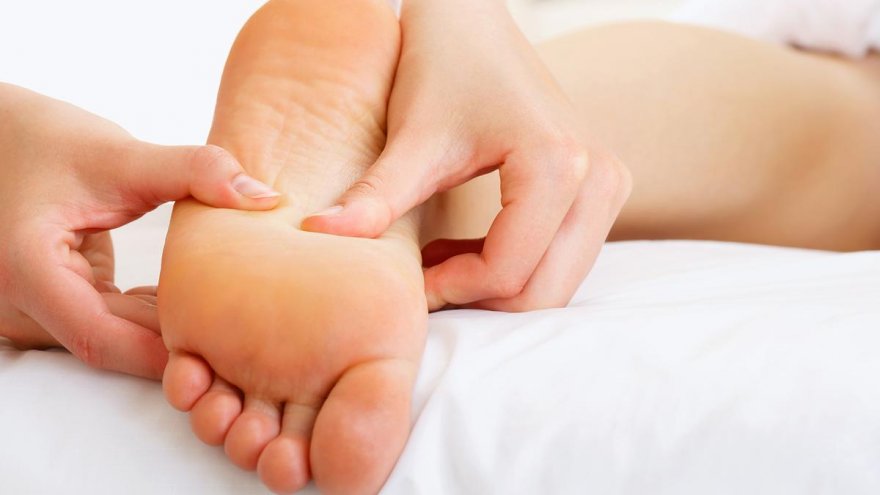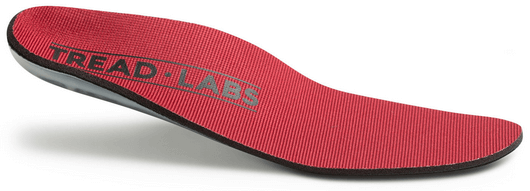Running with Plantar Fasciitis & How to Deal With It

Many runners have their own issues that they face when running. But, because of their intense passion, those runners will always seeks way to adapt and overcome such issues like plantar fasciitis.
What is plantar fasciitis?
The plantar fascia is a thick band of connective tissue which runs along the underneath of the foot from the heel bone to the toes. it may also have fascial connections to the Achilles tendon At the heel. Its job is to uphold the arch of the foot – it acts like a bowstring pulled between the heel and the toes.

Plantar fasciitis is caused by drastic or sudden increases in mileage, poor foot structure, and unfit running shoes that can overload the plantar fascia, the connective tissue which runs from the heel to the base of the toes. The plantar fascia can look like a series of fat rubber bands, but it’s made of collage- a rigid protein that’s not so stretchy. The stress of overuse, over-pronation or overused shoes can rip tiny tears in it that causes the pain and inflammation.
Plantar fasciitis may be a nagging problem, which gets worse and more difficult to solve the longer it’s present.
You can follow these tips to reduce the impacts of this issue on your running.
- In order To prevent plantar fasciitis, you should run on soft surfaces, and keep mileage increase less than 10 percent/ week, and visit a specialty running shop to make sure you’re wearing the proper shoes for your gait and foot type. It’s also essential to stretch the plantar fascia and Achilles tendon.
- At the first sign of soreness, massage and apply ice (grovel a frozen bottle of water under your foot). What you wear on your feet when you don’t run makes a difference. Arch supports are essential, and walking around by barefoot or in flimsy shoes can delay the recovery.
- If pain is appeared for longer than three weeks, you can meet a sports podiatrist. The Treatments such as orthotics, foot taping night splints, cortisone injections and anti-inflammatories deflate symptoms significantly in about 95 percent of sufferers within six weeks. For more serious cases, physical therapy may be appointed; six months of chronic pain may get benefit from shock-wave therapy or an FDA-approved plantar-fasciitis treatment.
- If it’s typical to experience pain in just one foot, you need to massage and stretch both feet. Do this as the first thing in the morning, and three times in a day.
Achilles Tendon Stretch:
Stand on your affected foot behind your healthy one. Point the toes of the back foot on the heel of the front foot, and lean into a wall. Then Bend the front knee and hold the back knee straight, heel firmly planted on the floor. Wait and a count to 10.
Plantar Fascia Stretch:
Sit down, and put the affected foot across the knee of another. Using the hand on your affected side and pull your toes back toward your shin until you feel a stretch in your arch. Move your thumb along your foot–you should feel tension. Keep for a count of 10.
- Looking for an advice or searching online for plantar fasciitis treatments yields a disturbingly varied wealth of suggestions. Some people said that they switched to barefoot running and got better; others prove to the magic curing powers of super cushioned shoes. What is important isn’t how you change your shoes, but that you change them. If you don’t change shoes or don’t strengthen the muscles in your foot, then it can become a weak point
Beside the reducing run volume or resting, the most popular recommended treatments include:
- wearing Plantar Fasciitis inserts in your shoes and arch support. Read: best running shoe for plantar fasciitis
- Changing shoes
- Taping the arch of the foot when running or walking
- ART or massage
- stretching and Rolling the foot
- stretching and Rolling the calves
- increasing exercises
- Wearing a splint at night to keep the foot in a semi-stretched position
- Medical treatments such as electro-stimulation or cortisone injections
One of the important treatments is finding out what caused the problem in the first place
Training and footwear:
This may explain the beginning of pain. The kind of trainers you wear is important, too. Trainers need to be appropriate for your foot type, running style and purpose. There are lots of patients who present with plantar fascia pain do end up needing to change their footwear.
Lower limb biomechanics
The angulation of the leg relating to the pelvis when you move, and even the knee position, may affect how the foot is loaded.
- Usually patients with plantar fascia pain need to correct issues higher up in their kinetic chain.
Foot type
someone with a very flat foot can need to meet a podiatrist. Podiatrists specialize in custom-made orthotics which reduces the load though the plantar fascia.
- Sometimes these treatments do not alleviate symptoms, therefore other treatments may be considered:
Acupuncture
surely not a first-line treatment, because it seems to be very painful, however I have had a rather good results when I have just used it. It is also not a single treatment, as the causative factors do need to be addressed.
Extracorporeal shockwave therapy
anecdotal evidence is good. There are not many risks, but it is also quite painful.
Corticosteroid injection
this may be useful in the short time, but must be combined with other treatments as above. There is also some concern that an injection related to increased risk of rupture of the plantar fascia.
Plantar fasciectomy
where a part of the attachment closed to the heel bone is removed. This is a last device, and not one I would want to recommend.
Follow these above treatments; I believe that you can continue to chase your passion without concern over your plantar fasciitis.
Add the ability to control your foot’s pronation with insoles
One of the most common and effective ways to control pronation, as well as prevent further damage, is the use of custom insoles, as mentioned above. One of the products that we really like, and serves its purpose extremely well, is the Stride Insole from Tread Labs. The Stride employs a design which provides active support through biomechanics. To put it more plainly, the insole is designed to correct the pronating motion of the foot by providing the precise support to counter that roll which is the result of overpronating feet.
 This particular product is specifically designed to provide control and much needed support for the condition of overpronation, offering the ability to maintain a healthy and active lifestyle without the risk of making the situation more difficult by worsening this particular foot condition.
This particular product is specifically designed to provide control and much needed support for the condition of overpronation, offering the ability to maintain a healthy and active lifestyle without the risk of making the situation more difficult by worsening this particular foot condition.
The Stride insoles are constructed of durable polyurethane foam, and put together in a low profile design, allowing them to fit perfectly into most running shoe with removable insole.
This is one of the key features that we really like. The company realized that not all feet are the same. There are different needs for levels of arch support. For this reason, Tread Labs produces this model in 4 different arch heights. This also makes these ideal support for those runners with flat feet. There are a few other option out there for overpronation insoles, however we like the firmer materials in this one. They seem to last longer and maintain the appropriate amount of support and control through continuous use, making them a great option for runners who like to rack up the miles.
These also have some really great extra features which add quite a bit to the life and function of this product. For starters, the insoles are produced with their PURE antimicrobial treatment, which is able to eliminate 99.9% of bacteria. And, even longer use is possible with the ability to replace the top cover when necessary. These two features allow prolonged use with maintained hygiene and odor control. This also allows the user to get their money’s worth out of this product.
Here is a video on how Tread Labs insoles deal with Plantar Fasciitis
Latest Articles
 Is It OK to Use Trail Running Shoes on the Road?While trail running shoes can be used on roads, especially in situations where a runner encounters mixed terrains or pref...
Is It OK to Use Trail Running Shoes on the Road?While trail running shoes can be used on roads, especially in situations where a runner encounters mixed terrains or pref... Is Running on a Treadmill Easier Than Running Outside?Runners have their own preferences, whether it is treadmill running, running outside on the road, or exploring trails. So...
Is Running on a Treadmill Easier Than Running Outside?Runners have their own preferences, whether it is treadmill running, running outside on the road, or exploring trails. So... How to Fix Sore Quads After Running?Rest, ice, gentle stretching, and over-the-counter pain relievers can help soothe sore quads after running. Also, ensure ...
How to Fix Sore Quads After Running?Rest, ice, gentle stretching, and over-the-counter pain relievers can help soothe sore quads after running. Also, ensure ... 10 Fruits With The Most Electrolytes to Replace Sports DrinksThese fruits are high in electrolytes such as potassium, magnesium, and calcium, essential for hydration, muscle function...
10 Fruits With The Most Electrolytes to Replace Sports DrinksThese fruits are high in electrolytes such as potassium, magnesium, and calcium, essential for hydration, muscle function...

